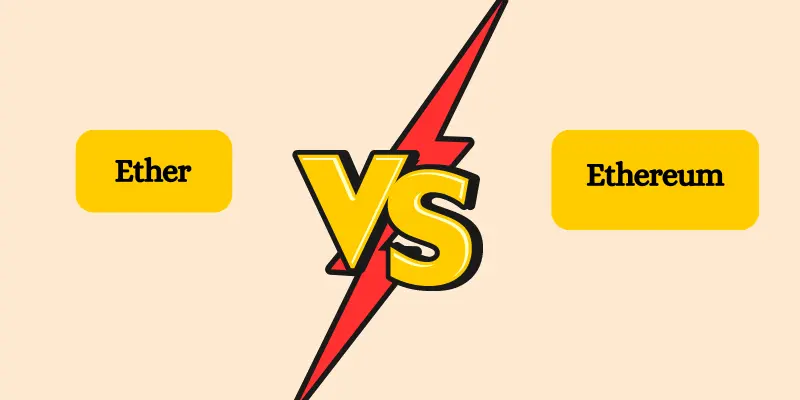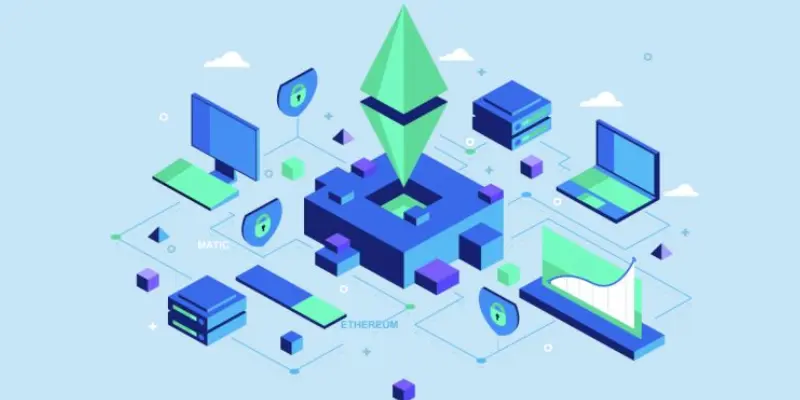As the first network to support intelligent contracts, Ethereum created an ecosystem that came into existence. It hosts many of today's decentralized apps (dApps) and runs various decentralized financial services, hosting tens of billions of dollars.
Since its inception at the end of 2015, Ethereum has seen tremendous growth, receiving the support of communities, individuals, and companies worldwide. However, it requires some work before it can gain the respect of the mass public.
For Ethereum blockchain platform to be affordable, accessible, and durable enough for it to gain the trust of the majority of people, as to overcome. The several issues and processes of identifying those obstacles and ways the network could address them are the primary reasons the Ethereum roadmap is in place.
What are Ethereum's most significant challenges? How do its scheduled upgrades help prepare for its widespread adoption? Let's look at what's to come for the world's second-largest cryptocurrency.
What is Ethereum Token Development?
Ethereum development services involve developing and placing digital tokens on the Ethereum blockchain platform. These tokens may represent different assets, including digital collectibles, cryptocurrency, and real-world assets such as stocks or real estate. The native token standard for Ethereum, ERC-20, is widely utilized to create fungible tokens that are, therefore, interchangeable. ERC-721 is a different standard used to develop non-fungible tokens (NFTs) that are unique and indistinguishable tokens that signify the ownership of a particular asset or product.
Ethereum development services usually involve the writing and deployment of smart contracts. These operate as self-executing agreements that follow predetermined rules. These smart contracts oversee the creation, distribution, and exchange of tokens, assuring that transactions are safe and transparent. Token developers should consider aspects like the economics of tokens, security, and conformity with regulations when creating Ethereum tokens to ensure their viability and efficiency inside and within the Ethereum ecosystem.
Ether and Ethereum: What's the Difference?

You can utilize Ether as a digital currency for financial transactions or as a store of value for investing. Ethereum can be described as the cryptocurrency network on which Ether is exchanged and stored. As we've mentioned, the network provides many other services besides ETH.
"These movements can range from simple fund transfers to complex trades, involving anything from asset exchanges to taking out loans or acquiring digital art," states Boaz Avital, the head of Anchorage's product division. Anchorage. These transactions will be processed and saved in Ethereum.
The Ethereum network is also used to store data and run decentralized applications. Instead of hosting software on servers owned and operated by Google (GOOGLE) or Amazon (AMZN), where only one company controls the data, individuals can host applications using the Ethereum blockchain platform. Users have control over their data and freedom of use for the application because no central authority oversees all of the data.
One of Ethereum's more fascinating uses is self-executing agreements, also known as smart contracts. As with all contracts where two parties have agreed to supply products and services soon, in contrast to traditional contracts, legal counsel isn't required to sign their agreement using the Ethereum blockchain platform. When the contract's conditions are satisfied, it executes the contract itself and transfers Ether to the proper party.
Current State of Ethereum Token Development
This is the world where the Top Ethereum Development Company will rise in 2024. This is due to several key developments:
NFTs and DeFi: Decentralized finance (DeFi) and non-fungible tokens (NFTs) are among the most crowded areas in crypto. Both depend heavily upon Ethereum tokens. DeFi uses tokens to represent financial services, while NFTs utilize tokens to monitor the ownership of assets in digital form. The need for new functions has pushed for technological innovation in token development.
Ethereum 2.0 (Eth2): This shift towards Ethereum 2.0 is expected to resolve scaling issues that have plagued the Ethereum network over the years. This will enable it to manage more transactions and open the way for a wider acceptance of Ethereum tokens.
Here's a rundown of the latest trends currently in Ethereum development services at the moment:
DeFi Integration: Various tokens are designed with features that enable them to integrate seamlessly with DeFi applications. They can be used for lending, borrowing, and stakes.
The focus is on NFTs: There's been a rising desire to use NFTs for new uses that go beyond digital art. Businesses are looking at methods to use NFTs to represent things such as digital assets, loyalty programs, and even items from the real world.
Interoperability: An effort is underway to develop tokens that can be used on multiple blockchains, not only Ethereum. This will make them more flexible and effective for a variety of applications.
The Ethereum Blockchain platform market is constantly changing, with new concepts and applications being developed. It's an exciting moment to be a part of the crypto world, which is why Ethereum tokens are at the forefront of innovation.
Ethereum Benefits
An extensive established network, the advantages of Ethereum are that it is a proven network that has been tested throughout many years of operation and billions of dollars trading hands. It is home to a vast and dedicated global community as well as the most significant ecosystem of blockchain and cryptocurrency.
Multiple functions: In addition to being a digital currency, Ethereum can handle various financial transactions, create smart contracts, and even provide data to third-party applications.
Constant Innovation: Hire Ethereum Developers who always look for ways to improve the network's performance and create new applications.
Eliminates Intermediaries: Ethereum's decentralized network promises that users can remove third-party intermediaries such as lawyers who draft and translate agreements, banks who facilitate financial transactions, and third-party web hosting services.
Ethereum Disadvantages
The rising cost of transactions and growing interest in Ethereum has increased transaction costs. Ethereum transaction costs, also called "gas," can fluctuate and be very expensive. It's great when you're mining money. However, it's not as great when accessing the Ethereum network. In contrast to Bitcoin, which rewards verified transaction processors, Ethereum requires those participating in the transaction to pay the cost.
Potential for Crypto Inflation: Although Ethereum has a limit per year for releasing 18 million Ether annually, there's no limit to the number of coins it can release. This could mean that, as an investment, Ethereum may behave like dollars, but it may not appreciate as fast as Bitcoin, which has a stringent limit on the lifetime of coins.
A Steep Learning Curve for Developers: Ethereum can take time to grasp as they transition from central processes to decentralized networks.
What makes Ethereum different From Bitcoin?
Although there are many commonalities between Ethereum and Bitcoin, there are significant differences. These are just a few of the differences:
Bitcoin Deals in Cryptocurrency: Ethereum provides a variety of methods of exchange, including cryptocurrency (Ethereum is known as Ether), smart contracts, and EVM, which is the Ethereum Virtual Machine (EVM).
They are built on various encryption protocols. Ethereum employs the "proof of stake" system, as contrasted to the "proof of work" system used by Bitcoin.
Bitcoin permits only open (permissionless or censorproof) transactions; Ethereum allows both permissioned and permissionless transactions.
Ethereum's block time average is considerably smaller than Bitcoin's—12 seconds instead of 10 minutes. This means that there are more block confirmations, which allows Ethereum's miners to finish more blocks and earn more Ether.
It is predicted that by 2021, just half of the Ether coin will have been mined (over 90 million coins). However, most Bitcoins are extracted (their supply is limited to 21,021).
To use Bitcoin, computers (called miners) operating on the system and verifying transactions earn rewards. The first computer to solve every block receives Bitcoins (or fractions of one) as the reward. Ethereum development services doesn't give out rewards for block solving and instead lets miners pay the cost of transactions.
2024: A Pivotal Year For Ethereum's Development
Ethereum Blockchain platform has a host of changes scheduled to be made to its primary technology in 2024. The initial update -- known as the Dencun update, will be released in the first quarter of 2024. A few important updates that could be anticipated from Dencun include:
EIP-4844
EIP-4844, or Proto-Danksharding, is a step towards sharding complete in the Ethereum roadmap. Proto-dank sharding introduces an entirely new type of transaction known as"blob-carrying transactions”. Blob-carrying transaction is a temporary data storage system within the beacon node that will cut down the cost of transactions for those who use Layer two roll ups by a factor of ten. In particular, the Dencun upgrade is expected to cut Layer 2 data publishing costs by more than 90%, resulting in lower transaction costs. In essence, the EIP will reduce the charges for gas for Ethereum Layer 2s and facilitate an overall rollup process in the ecosystem.
Blobs are erased after about two weeks. That means that blobs are accessible long enough for all users of an L2 to access while being sufficient to keep the use of disks at a manageable level. This means that blobs are less expensive than CALLDATA, which has been kept in history for a long time.
EIP-5656
EIP-5656 introduces a new EVM Opcode, MCOPY, offering a more straightforward and less expensive method of copying memory within the EVM. It is based on three parameters:
-
-
The source from which to copy size.
-
The amount of data that needs copying.
-
The destination where to store the data.
-
This can reduce the cost of gas for any memory-to-memory process.
EIP-1153
EIP-1153 introduces two new EVM Opcodes, specifically the TLOAD and TSTORE. These opcodes work similarly to other options, such as SLOAD and SSTORE. However, the main difference is that they clear the data after each transaction instead of keeping it inside Ethereum's overall state. This unique technique could significantly lower the cost of gas related to managing data throughout the execution of contracts.
How do EIPs Work?
The procedure for EIPs doesn't typically require direct voting, such as a collective vote of all members of the Ethereum community. Instead, the decision-making process typically depends on a rough consensus within the community.
The life-cycle of an EIP typically consists of some of the steps below:
-
-
Drafting: The member or group proposing the improvement creates an EIP and distributes it to the community.
-
-
-
Discussion: The EIP is discussed in the community via various channels, including online forums, Facebook, and developer gatherings.
-
-
-
Consensus building: Developers and community members share their views and concerns. The objective is to reach a consensus, which implies a broad consensus and little objection to any proposed change.
-
-
-
Implementation: If enough consensus is reached, the changes will be implemented by at least one of the Ethereum clients.
-
-
-
Ethereum network: The changes have been implemented and tested and can be enabled through Top Ethereum Development Company.
-
Conclusion
It is challenging to know when each of the upgrades to the plan for Ethereum Blockchain platform will be finished since many of the items are being worked on in parallel and at different paces. Certain upgrades, such as quantum resistance, are of lower priority and might not be in place over the five to 10 years ahead. The urgency of an upgrade may also alter over time based on external influences such as developments in quantum computer technology. A comparison to the evolution of biological systems will help us comprehend Ethereum development services. A network that can adapt to new demands and maintain its fitness is more likely to succeed than one inflexible to changes. As the network grows more effective, scalable, and secure, fewer protocol changes will be required





.webp)







Share this blog